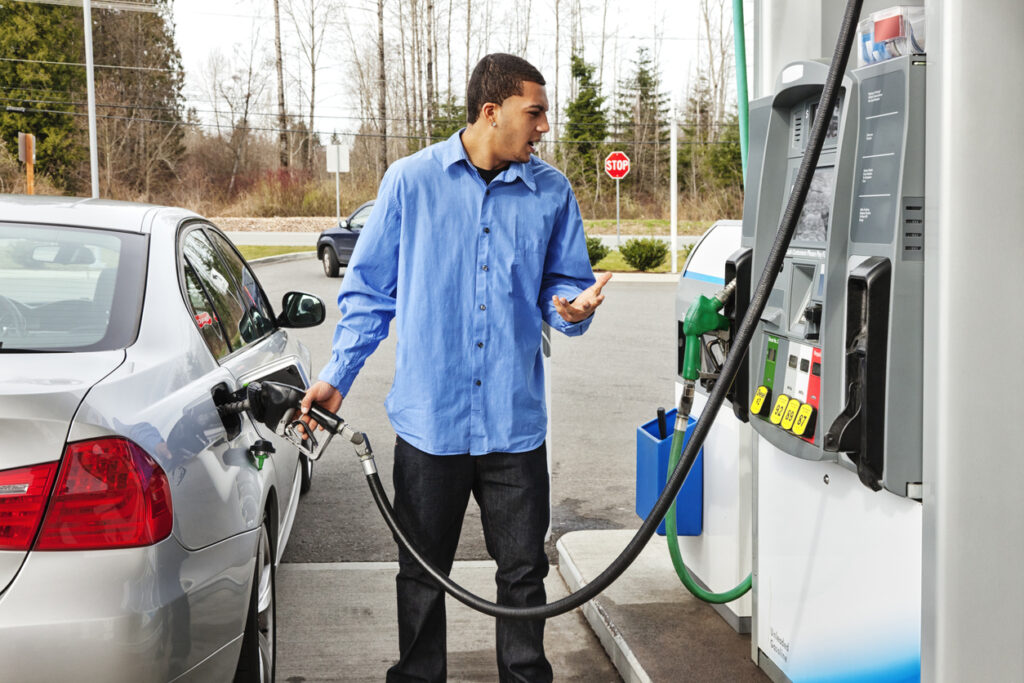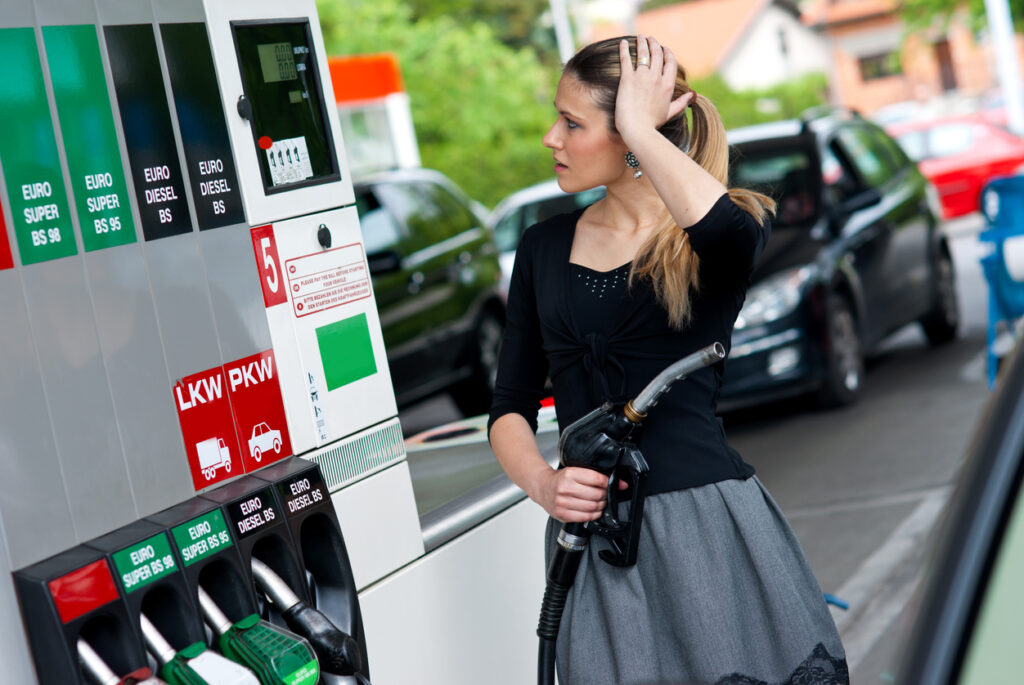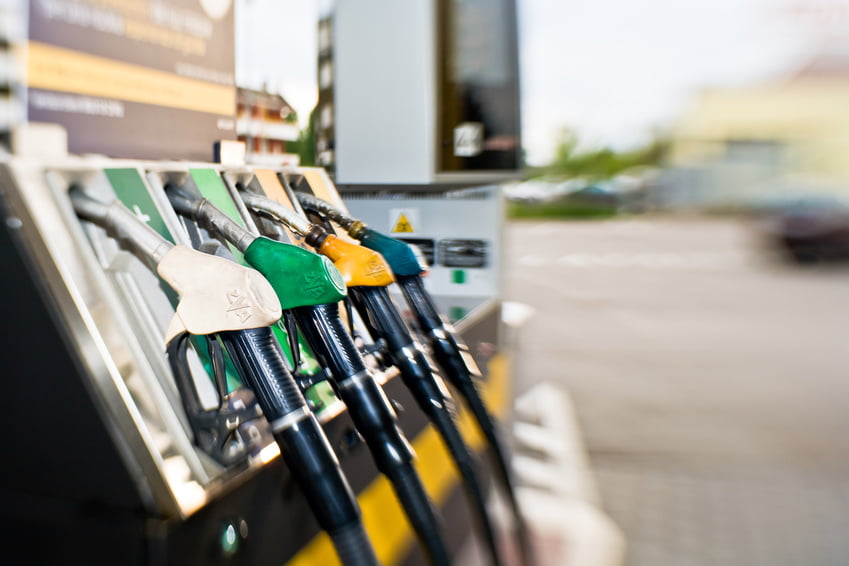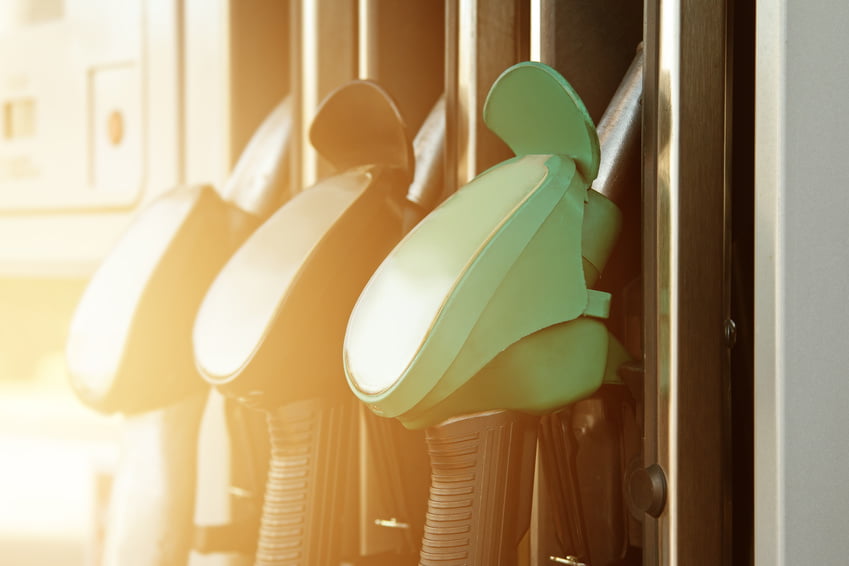There are many things that you might dread as a driver – from breakdowns to locking keys in your car – but putting the wrong fuel in your car is a surprisingly common mistake. It’s an error that isn’t just inconvenient and embarrassing, it can also be costly to fix.
Millions of drivers accidentally fill their car with the wrong type of fuel each year, with the AA reporting that it happens around every three and a half minutes. So what do you do if it happens to you?
Here, we offer advice on what to do if you put the wrong type of fuel in your car, and look at the consequences for both petrol and diesel cars.
Skip ahead to the most relevant section for your needs, using the links below.
- What to Do if You Use the Wrong Type of Fuel
- Symptoms of Wrong Fuel in Your Vehicle
- What Happens if You Put Petrol in a Diesel Car?
- What Happens if You Put Diesel in a Petrol Car?
- What Happens if You Use E10 by Mistake?
- Is Misfuelling Covered on Vehicle Insurance?
- How to Prevent Misfuelling
What to Do if You Use the Wrong Type of Fuel
Yikes – if you’ve put the wrong type of fuel in your car, here’s what you need to do next…
- Don’t start your car: Hopefully, you notice your misfuelling dilemma before you switch on the ignition because if you don’t it could cause significant engine damage. If you have turned on the engine and even started driving, stop immediately and switch off the engine.
- Still on the forecourt? Talk to the fuel attendant: The best course of action is to tell the fuel attendant what’s happened.
- Push your car to safety: If you’re still parked at the pumps, push your car to a safe area on the forecourt where it’s out of the way.
- Call for assistance: Once you’ve moved your car you should call for assistance. Even if you don’t have breakdown cover, you can call one of the major breakdown operators (AA, RAC, Green Flag) and they’ll come and help you. The AA actually has its own specialist division for handling cases of misfuel, AA Fuel Assist. The service is available to non-AA members, and they’ll drain, flush and replenish your fuel tank with clean fuel at the roadside (provided no further damage has been done).
- Speak to your insurance: Don’t forget to check with your car insurer to see if you’re covered for any misfuelling-related charges, including repairs, draining and cleaning.
Symptoms of Wrong Fuel in Your Vehicle
Driven down the road but concerned that you may have used the wrong type of fuel in your car? There are a few tell-tale symptoms to look out for, including…
- Car struggles to start when you turn the ignition
- Excess smoke from the exhaust
- Unusual engine running noise at idle
- Lack of power at normal driving speed and on faster roads
- The engine doesn’t stop running when you switch off the ignition
Spot any of these signs and it’s worth pulling over and calling your breakdown provider, as any could indicate a serious underlying fault that is likely to get worse and cause significant engine damage.
What Happens if You Put Petrol in a Diesel Car?
This is much more common than putting diesel in a petrol car, as the petrol pump nozzle is able to fit into most car diesel caps. Sadly, it’s also the most serious, with petrol potentially causing severe damage to a diesel engine if the fuel has chance to circulate through the system.
Diesel acts like a lubricant for engines, while petrol is a solvent and if it circulates through a diesel engine, it can cause damage to the injectors, fuel lines, filters, pumps and tank, and could even result in the car requiring a completely new engine.
What Happens if You Put Diesel in a Petrol Car?
It’s more difficult to accidentally put diesel in a petrol car because diesel filler nozzles are a different shape from most petrol caps, so generally won’t fit in most petrol fuel tanks. Despite this, it’s not impossible to put diesel in a petrol car, and a third of all wrong fuel callouts received by the AA are due to this.
If you’re one of the unlucky few to accidentally fill your petrol car with diesel, the problems don’t start until you turn on the ignition. Diesel won’t directly harm the fuel tank, but it could cause serious damage if it circulates through the fuel system. This is particularly true with direct injection (GDI) engines.
What Happens if You Use E10 by Mistake?
If you drive a classic car or any petrol vehicle that isn’t compatible with modern fuels, accidentally adding E10 – the newest form of unleaded petrol – can be a problem. But the good news is that E10 isn’t likely to cause any short-term damage and your car should run as normal.
However, if you repeatedly use E10 accidentally or otherwise, this could cause long-term issues with the integrity of the engine and fuel tank. Our full guide on how E10 affects cars goes into comprehensive detail about the potential problems that can arise but, suffice it to say, using the wrong type of fuel petrol is something you’re going to want to avoid in the future.
Is Misfuelling Covered on Vehicle Insurance?
Adding the wrong type of fuel to a car is a common, accidental problem that could happen to any motorist — but don’t expect it to be automatically covered on your car insurance policy. In 2023, This Is Money discovered that only one in 10 car insurance companies pay out in the event of misfuelling – that’s around 20 brands out of a possible 195 insurers in the UK.
While most car insurers cover the cost of accidental damage, This Is Money also found that 42% of policies contained a misfuelling exclusion clause, exempting the insurer from paying out for damage caused by putting the wrong type of fuel in a car.
Even if your insurance covers damage from misfuelling, it probably won’t cover the cost of cleaning and draining. That means you’ll either need to pay for the tank to be drained and cleaned yourself or else take out a standalone misfuelling policy, which should cover these costs as well repairing any damage done.
Alternatively, you could invest in a premium roadside assistance package which includes the cost of helping you in the event of misfuelling. If you go for this option, make sure you read the small print to check for any exclusions which you could end up paying for yourself.
How to Prevent Misfuelling
Misfuelling your car may sound like an utter nightmare, but it is easily preventable. Here are a few tips to help prevent misfuelling on the forecourt:
- Don’t rely on the colour of the nozzles, as these may differ, particularly when driving overseas. Instead, always read the pump carefully before refuelling.
- When you’re driving a new car, a hire car or a family member’s car, consider adding a sticker to the fuel cap. This will give you a gentle reminder to select the right nozzle on the forecourt.
- Don’t fill up your car’s tank when you’re in a rush or stressed out, as this is the most likely time to make mistakes and cause accidents.
- Stay focused at the fuel pump — distractions could easily lead you to fill your car with the wrong type of fuel.
- For those that drive a diesel – small, inexpensive devices can be installed onto the filler cap, preventing you from accidentally inserting a petrol nozzle.
Whichever fuel you use, you can get more miles from every tank with Redex. Our innovative fuel additives work to keep your engine running at its best, improving efficiency and saving you money each time you top up the tank. To get into the habit of using Redex whenever you fill up, read more about petrol or diesel Redex.




